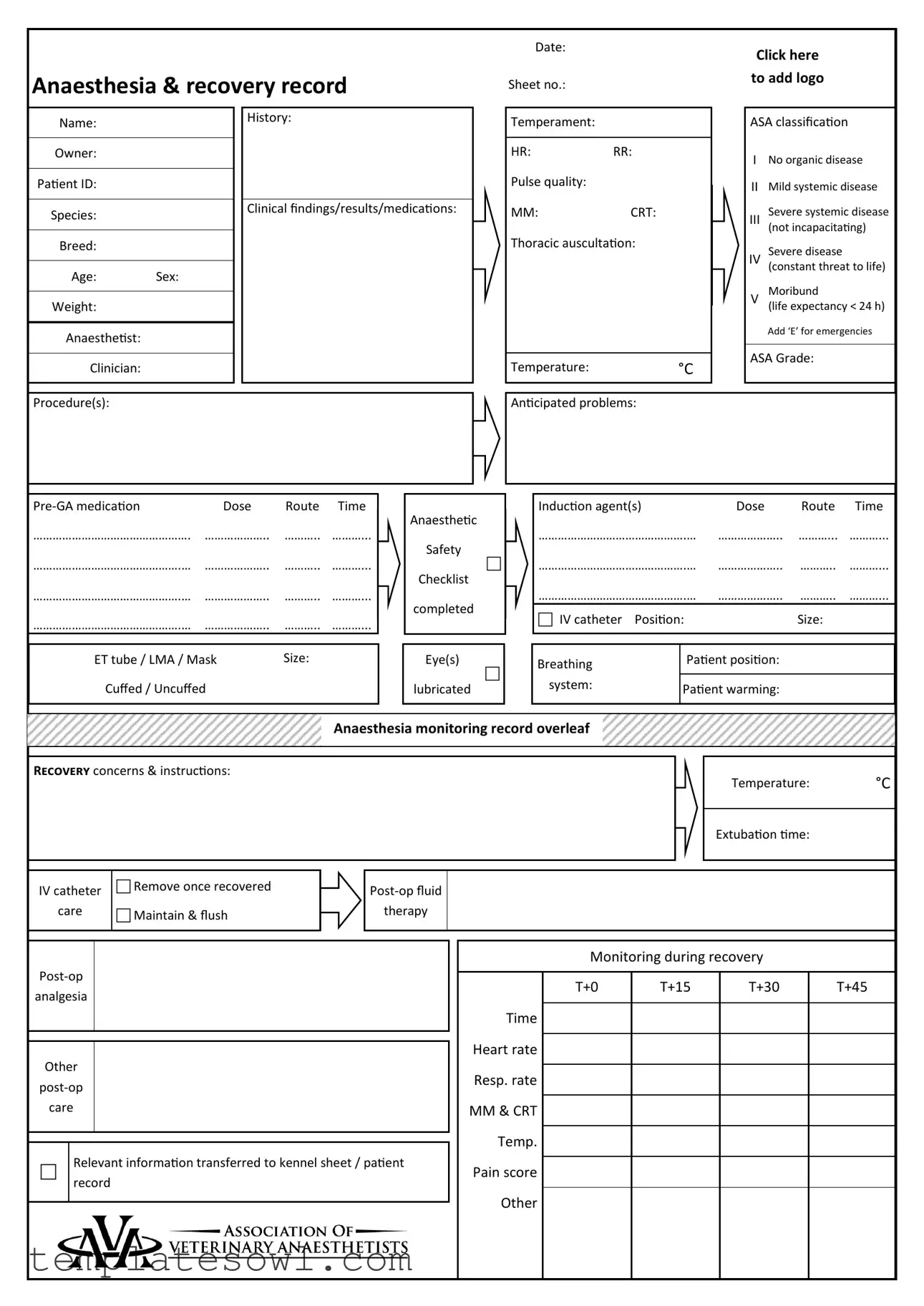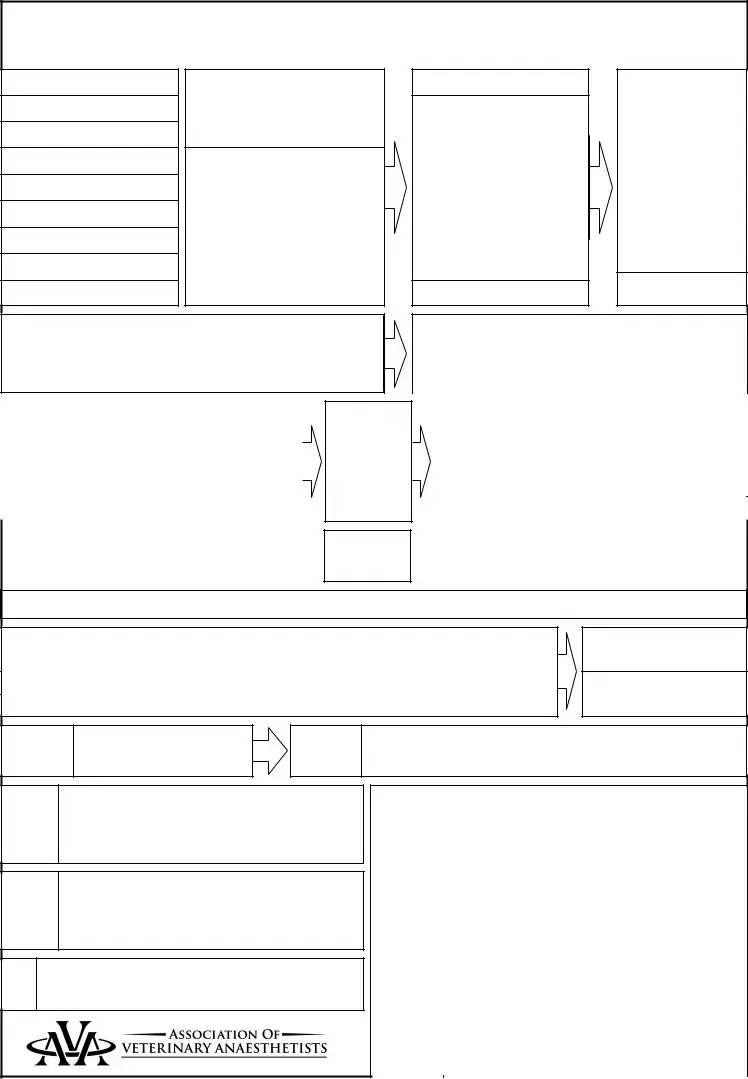What is the purpose of the Anesthesia Record form?
The Anesthesia Record form is crucial for documenting all aspects of a patient's anesthesia during surgical procedures. It serves as a comprehensive record of the patient’s history, classification, medications administered, monitoring during anesthesia, and recovery details. This documentation ensures continuity of care and helps in evaluating the anesthesia process both during and after the procedure.
What information is included in the Anesthesia Record?
The form contains various essential details such as the date, patient identification, and history. It also includes the patient's ASA classification, vital signs (like heart rate, respiratory rate, and temperature), medications given, anesthesia techniques used, and recovery instructions. Additional sections cover anticipated problems, monitoring records, and notes on fluid volume administered, ensuring a complete and thorough documentation of the anesthesia process.
How does the ASA classification impact patient management?
The ASA (American Society of Anesthesiologists) classification assesses the physical status of the patient prior to anesthesia. Ranging from ASA I (healthy) to ASA V (moribund), this classification helps clinicians make informed decisions regarding the anesthesia plan and the potential risks involved. A higher ASA classification often indicates a need for more intensive monitoring and care throughout the procedure and recovery.
Why is patient monitoring important during anesthesia?
Monitoring is vital for ensuring patient safety during anesthesia. The Anesthesia Record provides space for tracking critical parameters such as heart rate, respiratory rate, temperature, and pain levels at various intervals. This ongoing assessment allows the anesthetist to quickly identify any potential complications and respond accordingly, ultimately improving patient outcomes and minimizing risks.
What are the instructions for recovery mentioned in the Anesthesia Record?
Recovery instructions in the Anesthesia Record form guide post-operative care. These may include temperature monitoring, IV catheter management, and post-operative fluid therapy. The form also details analgesia and any other special care that the patient may require after being extubated, ensuring a smooth recovery process tailored to the individual’s needs.
How should I use the Anesthesia Record form in practice?
Proper use of the Anesthesia Record form involves accurately documenting information before, during, and after the surgical procedure. Fill out the patient's details, including history and ASA classification, before anesthesia begins. During the procedure, record all medications and vital signs diligently. After the procedure, complete the recovery instructions and ensure all data is transferred to necessary records. Thorough completion of the form is essential for quality patient care and compliance with best practice standards.


